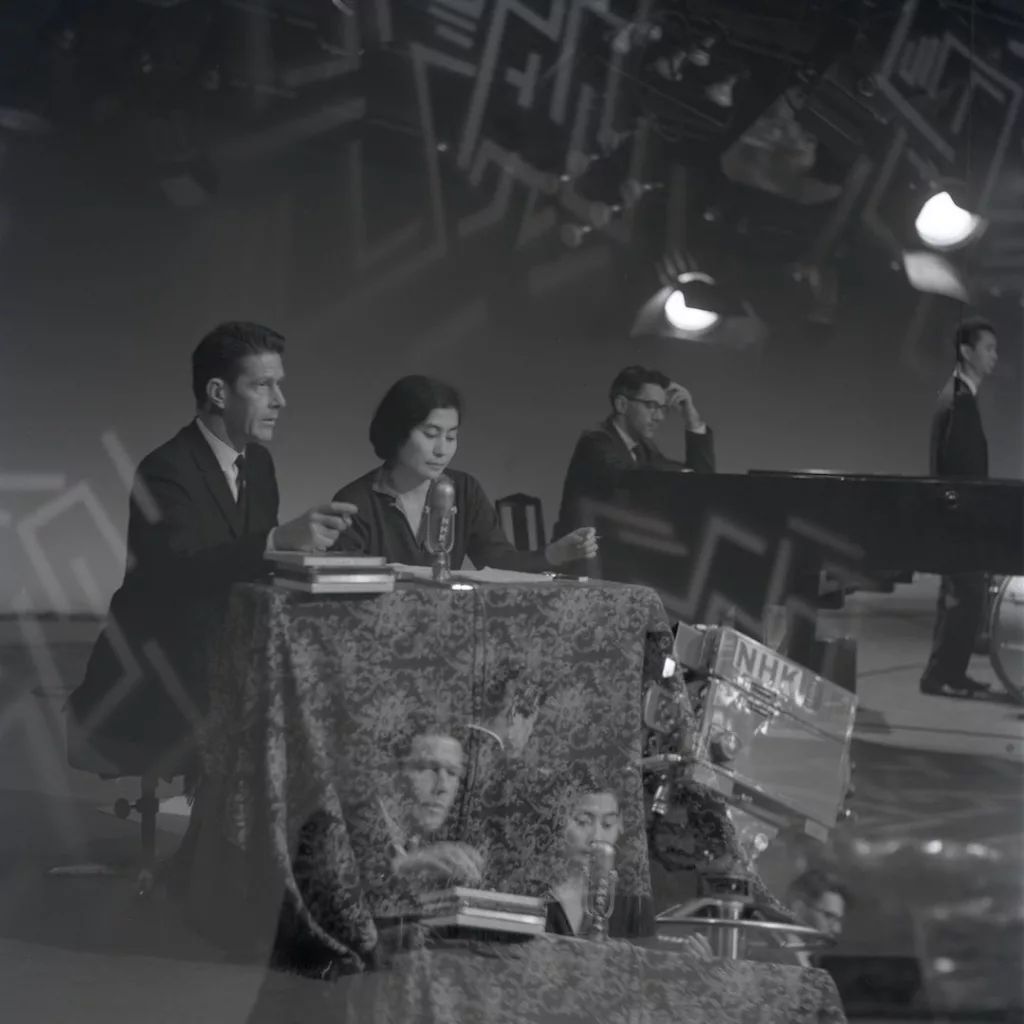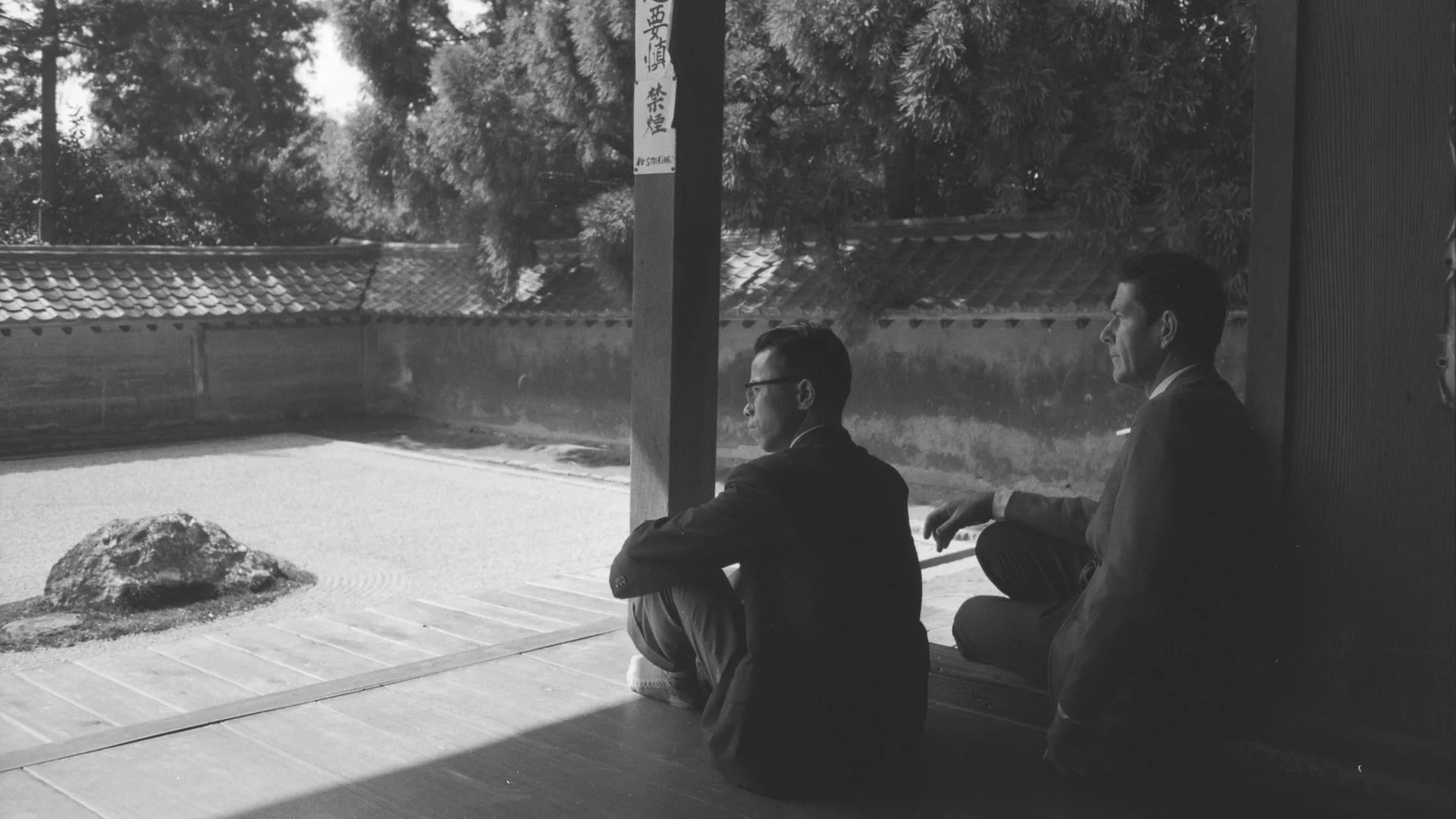Japan and the Global Avant-Garde: Fall/Winter 2023-24


John Cage appearing on NHK in 1962 (from left: Cage, Yoko Ono, David Tudor, Kenji Kobayashi) © Yasuhiro Yoshioka, Courtesy of Sogetsu Foundation
Japan and the Global Avant-Garde: Fall/Winter 2023-24
 Products for Fluxus editions, 1964. Digital Image © The Museum of Modern Art/Licensed by SCALA / Art Resource, NY |
 Products for Fluxus editions, 1964. Digital Image © The Museum of Modern Art/Licensed by SCALA / Art Resource, NY |
Celebrate the pioneering Japanese spirit of the global avant-garde! Delve into the radical creative movements of the 1960s from Tokyo to New York and beyond through a special season of symbiotic, genre-crossing programming, from the exhibition Out of Bounds: Japanese Women Artists in Fluxus to the performing arts series John Cage’s Japan, augmented by a screening of Hiroshi Teshigahara’s Pitfall (1962), plus additional related events.
Out of Bounds (October 13, 2023—January 21, 2024) is the first exhibition to fully explore the essential role of Japanese women in Fluxus, a transnational movement that began in the early 1960s as a network of artists, composers and poets, helping contemporary artists cross boundaries to define new modes of artistic expression. Fluxus artists found new means of expression in film, music, performance, publishing and the appropriation of mass-produced objects. The movement challenged aesthetic traditions by investing chance occurrences and the ephemera and actions of daily life with artistic value and meaning. This exhibition highlights the contributions of four pioneering Japanese artists—Shigeko Kubota (1937-2015), Yoko Ono (1933- ), Takako Saito (1929- ) and Mieko Shiomi (1938- )—and contextualizes their role within Fluxus and the broader artistic movements of the 1960s and beyond.
 © Photo by Yasuhiro Yoshioka, Courtesy of Sogetsu Foundation. |
 © Photo by Yasuhiro Yoshioka, Courtesy of Sogetsu Foundation. |
The Fluxus movement was greatly influenced by John Cage, one of the 20th-century’s most iconoclastic avant-garde artists, whose work is showcased this fall in our John Cage’s Japan series. Cage himself was heavily inspired by Japanese art and culture. Cage first visited Japan in 1962 at the invitation of composer Toshi Ichiyanagi on a trip organized by avant-garde filmmaker and artist Hiroshi Teshigahara and his organization The Sogetsu Art Center (1958-71). Toshi Ichiyanagi and Yoko Ono, who were married at the time and both close collaborators with Cage, accompanied him on tours to Tokyo, Osaka, Kyoto and Sapporo, where Cage was profoundly influenced by Japanese culture and the artists he met. Cage’s visit to the Zen rock garden of Ryoanji temple in Kyoto inspired Ryoanji (1983-85), and his unrealized project, Noh-opera: Or the Complete Musical Works of Marcel Duchamp, manifests onstage at Japan Society as a world premiere production, Noh-Opera/Noh-tation: Decoding John Cage’s Unrealized Project, directed by composer/musician Tomomi Adachi. John Cage’s Japan series concludes with Cage Shock: Homage to His First Japan Visit, including Ichiyanagi’s Sapporo, whose 1962 premiere was conducted by John Cage and performed by Yoko Ono and Yuji Takahashi, among others.
 Pitfall © 1962 Teshigahara Productions |
 Pitfall © 1962 Teshigahara Productions |
Tickets to related performances, screenings, and events include complementary admission for one person to Out of Bounds: Japanese Women Artists in Fluxus, on view at Japan Society Gallery through January 21, 2024. Please come early to view the exhibition and show your ticket/receipt to the Welcome Desk for free admission before your event.
Top Image © Photo by Yasuhiro Yoshioka, Courtesy of Sogetsu Foundation; Products for Fluxus editions, 1964. Digital Image © The Museum of Modern Art/Licensed by SCALA / Art Resource, NY; © Photo by Yasuhiro Yoshioka, Courtesy of Sogetsu Foundation; Pitfall © 1962 Teshigahara Productions.
Japan Society programs are made possible by leadership support from Booth Ferris Foundation and the New York State Council on the Arts with the support of the Office of the Governor and the New York State Legislature.
